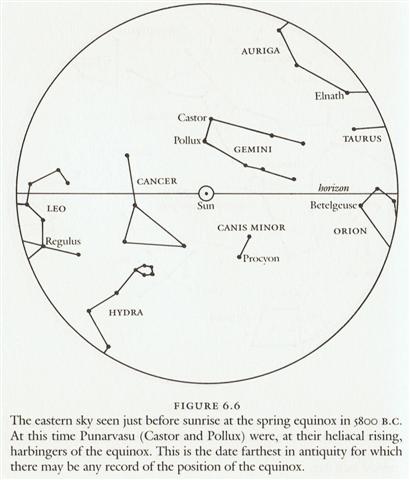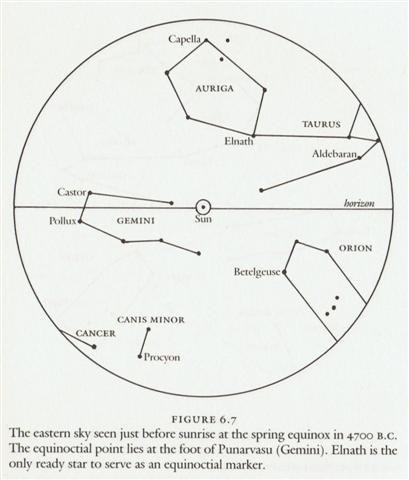4. An
updated
list of
culminations
ought to
begin
with
Atlas
and I
have
here used my
data for
Alcyone:
There are 193 - 135 = 58 RA days from Atlas up to and including the day of Castor. 'July 13 is day 59 from Atlas and evidently in G connected with an ihe tau glyph:
Although day 59 in the manzil calendar comes in 'July 14 with Procyon, because its first day is 'May 17. The culmination night of Procyon was the day after 'February 23: ... The leap day was introduced as part of the Julian reform. The day following the Terminalia (February 23) was doubled, forming the 'bis sextum - literally 'double sixth', since February 24 was 'the sixth day before the Kalends of March' using Roman inclusive counting (March 1 was the 'first day') ...
Vega is close to the end of the Gregorian year and 362 - 194 = 168 days counted from 'July 14. 18 days after Vega comes Altair and in G I have joined it to the first glyph beyond 236 (= 8 * 29½):
The manzil calendar has its day 245 (Al Naam 1) - as I have arranged it - at Gb1-8, one day later (exactly as at Procyon). 245 - 59 = 186.
It might be argued that the heliacal data above are false because they describe what would be the case if the orbit of Earth was circular, I have used a spatial map over the sky dome as if it was a time map. Indeed it is true that the distances between heliacal risings and midnight culminations ought to be different than those in the table above, because only my midnight culminations are distributed along the elliptical time path of Earth. On the other hand, direct observations of heliacal risings of stars are difficult, and possibly, therefore, the numbers in the table above could have been used instead. Or indirect observations by looking at the face of the full Moon reflecting light from Sun, from the diametrically opposite side of the sky dome - the nakshatra method (cfr at Camp 5) - could do the task: ... In Hindu legend there was a mother goddess called Aditi, who had seven offspring. She is called 'Mother of the Gods'. Aditi, whose name means 'free, unbounded, infinity' was assigned in the ancient lists of constellations as the regent of the asterism Punarvasu. Punarvasu is dual in form and means 'The Doublegood Pair'. The singular form of this noun is used to refer to the star Pollux. It is not difficult to surmise that the other member of the Doublegood Pair was Castor. Then the constellation Punarvasu is quite equivalent to our Gemini, the Twins. In far antiquity (5800 B.C.) the spring equinoctial point was predicted by the heliacal rising of the Twins (see fig. 6.6). By 4700 B.C. the equinox lay squarely in Gemini (fig. 6.7).
| |||||||||||||||||||||||||||||||||||||||||||||||||||||||||||||||||||||||||||||||||||||||||||||||||||||||||||||||||||||||||||||||||||||||||||||||||||||||||||||||||||||||||||||||||||||||||||||||||||||||||||||||||||||||||||||||||||||||||||||||||||||||||||||||||||||||||||||||||||||||||||||||||||||||||||||||||||||||||||||||||||||||||||||||||||||||||||||||||||||||||||||||||||||||||||||||||||||||||||||||||||||||||||||||||||||||||||||||||||||||||||||||||










